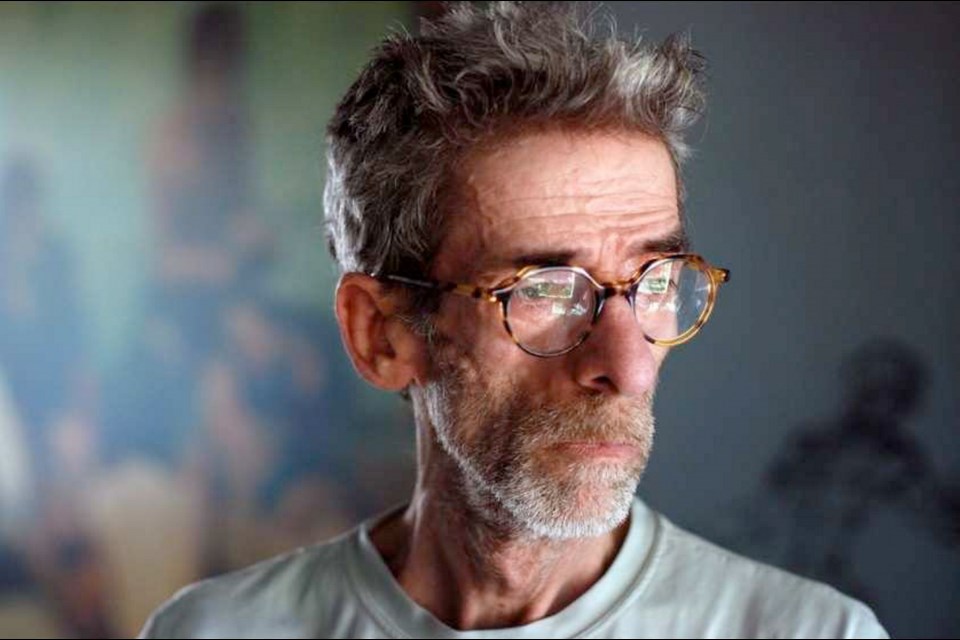Artist Joe Average has been living with HIV for 33 years. But he’s managed to make a living off his art, in spite of some challenging health issues.
Unfortunately, the commissions have slowed down. So last week the 59-year-old announced on his Facebook page that he’s finally going to apply for disability benefits from the province.
“Sales have been really poor, and a few of my friends have said, ‘Why aren’t you on disability?’ ” said Average. “I’ve always said I didn’t feel like I was disabled. (But) a good friend of mine said, ‘What do you mean you’re not disabled? You weigh a hundred pounds, and you can hardly walk two blocks. Could you stand and do a job for eight hours a day?’
“I said, ‘No.’ So I’m applying for disability, to try and help financially.”
Average doesn’t want people to be alarmed — his health has been the same for a few years. But there have been issues, partly from the drugs he’s been taking to help him stay alive.
“I’m on antiretroviral (treatment),” he explained. “One of the nasty side-effects is the wasting of your body fat, which is called lipoatrophy. Once that is all done it starts on your muscles. And so my muscles are kind of weak, but I can still get around.”
One of the treatments doctors were giving him for HIV was testosterone, which he found “turned me into a completely different person.” So he decided to stop.
All sorts of problems were happening to me, and no one could figure out what they were,” he relates. “I finally figured it out that it was the hormones, so when I stopped doing (testosterone) everything changed. I went through andropause, which is the male version of menopause. There was an abrupt change to the hormones in my body.
“When I came out of it all I was like, ‘Who the hell am I?’ I’d lost my sex drive, I’d lost everything … and I didn’t feel like painting cartoony-eyed faces anymore.”
He laughs. Average’s bright, colourful cartoon figures are his artistic signature, and have been a staple on Vancouver posters and banners since the late 1980s. But he hasn’t actually painted since 2000.
“I haven’t painted for quite awhile, (except for) some painting digitally now on the computer,” he said. “To do a painting takes three days, and you’re on your knees a lot and trying to be really focused. I’m just too old for that.”
How has he survived? Through reproductions of his older paintings he sells on his website, joeaverageannex.com, and commissions.
“I paint portraits for people or portraits of their pets,” he said. “I haven’t completely abandoned art, but I’m certainly not working in the style I used to. (But) I’ve got this cool painting program on my computer, which allows me to work in oils and stuff.”
He has a wry sense of humour about no longer working in his “cartoony” style.
“I’m just a completely different person,” he said. “It’s a tough one to swallow … (but) I couldn’t even fake it if I wanted to. I wish I could, kinda. You remember that line in a Woody Allen film, ‘Oh, I liked your earlier, funnier work better.’ (For me it’s) ‘That’s not how you used to paint!’ ”
Average was born Brock David Tebbutt in Victoria (“Quite a handle, eh?”). Inspired by artists in Vancouver’s Western Front who adopted stage names like Dr. Brute and Sally Peanuts, he took the name Joe Average.
The name came while he was drinking “a few glasses of wine” with a friend and looking through a cache of 1960s magazines that featured a recurring character he dubbed the “Average Joe.”
“I guess I had one sip too many and came across another one and said, ‘Joe Average,’ ” he explains. “My friend and I looked at each other and she went, ‘That’s it! That’s your name! It suits you perfectly!’ I’m 5-8, I’m average lookin’, got a C average in school. I thought, ‘This is perfect!’ It wasn’t as wild as the other names, but it suited me to a T.”
He didn’t become a full-time artist until he was diagnosed with HIV.
“When I was first diagnosed I was unemployed,” he said. “They said, ‘You could have six months to live, we don’t know.’ I thought, ‘How do I want to spend my last six months, in an unemployment line?’
“So I challenged myself to see if I could live off my art — and I’ve been doing it ever since.”



